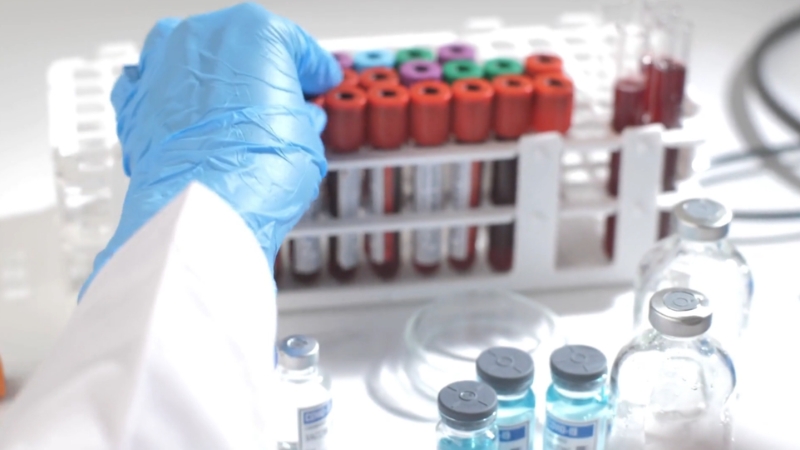At first glance, low iron saturation with normal ferritin seems contradictory. Ferritin is the body’s main iron storage protein, and low iron saturation typically reflects insufficient circulating iron—so how can one be normal while the other is low?
The answer lies in understanding that iron metabolism is a complex, multi-layered system, and ferritin alone does not give the full picture. Ferritin reflects stored iron, while iron saturation measures available iron in the bloodstream, specifically the percentage of transferrin (iron transport protein) that is bound to iron.
These markers respond differently to inflammation, chronic disease, infection, hormone changes, and nutritional status.
In clinical practice, this pattern of low iron saturation with normal or even high ferritin is frequently associated with functional iron deficiency, anemia of chronic disease, or early-stage iron depletion masked by inflammation.
Iron Metabolism Basics: Why Saturation and Ferritin Diverge
Iron Marker
What It Measures
Normal Range
Influenced By
Ferritin
Stored iron in tissues (liver, spleen)
30–300 ng/mL (men), 15–200 ng/mL (women)
Inflammation, infection, liver disease
Iron Saturation
% of transferrin saturated with iron
20–50%
Iron availability, binding capacity
Serum Iron
Iron circulating in the blood
60–170 µg/dL
Recent intake, diurnal variation
TIBC
Total iron-binding capacity (transferrin)
240–450 µg/dL
Nutritional status, liver function
Iron saturation is calculated as:
So, even if serum iron is low, iron saturation may appear low despite normal ferritin—especially if transferrin levels are high or ferritin is elevated due to inflammation.
5 Primary Causes of Low Iron Saturation with Normal Ferritin

1. Anemia of Chronic Disease (ACD) / Anemia of Inflammation
Anemia of chronic disease, also known as anemia of inflammation, is one of the most common non-nutritional causes of altered iron studies. In ACD, the iron metabolism is not disrupted by absolute deficiency, but by immune-driven sequestration of iron.
The key mechanism involves elevated hepcidin, a peptide hormone produced by the liver in response to pro-inflammatory cytokines, particularly IL-6. Hepcidin blocks ferroportin, the only known cellular iron exporter, preventing iron from being released from macrophages and intestinal cells into the plasma.
This creates a functional iron deficit—iron is present in the body, but trapped in storage.
This condition is especially common in individuals with:
Lab findings in ACD typically include:
Marker
Level in ACD
Explanation
Ferritin
Normal or Elevated
Acute-phase reactant; falsely elevated due to inflammation
Serum Iron
Low
Iron trapped in macrophages; less released into the bloodstream
TIBC
Low or Normal
Reduced transferrin production during inflammation
Iron Saturation
Low (<15%)
Reflects true circulating iron shortage
CRP / ESR
Elevated
Confirms ongoing inflammatory state
2. Functional Iron Deficiency (FID)
Prevalence and risk factors for functional iron deficiency in children with chronic kidney disease https://t.co/mlqGdQoa9l
— CEN: Clinical Experimental Nephrology (@CenJournal) October 7, 2022
Functional iron deficiency occurs when iron stores are adequate (normal or high ferritin), but the delivery of iron to the bone marrow is impaired, making it unavailable for red blood cell production.
This pattern is seen in conditions of high iron demand or impaired utilization, and is particularly well-documented in patients undergoing erythropoietin (EPO) therapy, such as those with end-stage renal disease.
In FID, the body’s iron requirements exceed the ability of the transport system (transferrin) to deliver it. Thus, transferrin saturation drops even when ferritin appears sufficient. Hepcidin again plays a central role in downregulating ferroportin and suppressing iron release from stores. This mismatch between demand and availability is critical.
Common settings where FID occurs include:
Lab features of FID are nuanced:
Marker
Typical Level
Interpretation
Ferritin
Normal or mildly elevated (50–200)
Suggests some iron stores, not an absolute deficiency
Serum Iron
Low
Poor release or binding of iron
TIBC
Normal or high
Transferrin may increase in response to low saturation
Iron Saturation
Low (<20%)
Consistent with impaired delivery
CHr (Retic Hb)
Low
Indicates low iron availability in bone marrow
3. Early Iron Deficiency (Pre-Latent Stage)

Iron deficiency develops in stages. In the early stage, the body begins to deplete circulating iron, but has not yet exhausted its storage reserves. This presents as low serum iron and low saturation, with ferritin still within the lower end of the normal range (30–50 ng/mL).
At this stage, traditional ferritin cutoffs (>15 ng/mL) may miss evolving deficiency. This is especially relevant in menstruating women, athletes, and vegetarians or vegans with borderline iron intake. The depletion of transferrin-bound iron occurs before ferritin drops, hence the discrepancy.
Typical progression of iron deficiency:
Stage
Serum Iron
Ferritin
Saturation
Symptoms
Pre-latent deficiency
↓
Normal-low
↓
Often asymptomatic
Latent deficiency
↓↓
↓
↓↓
Fatigue, poor concentration
Iron-deficiency anemia
↓↓↓
Very low
↓↓↓
Pallor, SOB, hair loss, etc.
Evidence from the British Journal of Haematology (2020) supports ferritin thresholds of <50 ng/mL as indicative of deficiency in the presence of inflammation or chronic symptoms, rather than relying on the <15 ng/mL cutoff.
4. Inflammation-Related Ferritin Elevation (Masked Iron Deficiency)
View this post on Instagram
Ferritin is an acute-phase reactant, meaning it rises in response to inflammation, infection, or tissue damage—independently of iron status.
In patients with subclinical or low-grade inflammation (e.g., metabolic syndrome, obesity, or recent illness), ferritin can remain normal or even elevated, masking true iron depletion.
This is especially common in:
In such cases, CRP or ESR levels help uncover the inflammatory effect. A ferritin of 80–100 ng/mL may still suggest iron deficiency if CRP is elevated and saturation is <15%.
Marker reassessment under low-CRP conditions is recommended in such patients to unmask the true iron status.
5. Liver Disease or Alcoholism

Liver dysfunction or chronic alcohol use can also elevate ferritin due to increased hepatic synthesis and cell turnover, while iron saturation remains low or normal. Ferritin in these cases does not reliably reflect iron storage but rather hepatic inflammation and cellular leakage.
Alcohol-induced elevation can falsely reassure clinicians of adequate iron status, while the patient remains iron-depleted or even anemic.
Condition
Ferritin
Saturation
Additional Clues
Alcoholic liver disease
High (>300)
Low–normal
Elevated AST/ALT, low platelets
Hemochromatosis
Very high (>1000)
High
High transferrin saturation (>60%)
Differentiation is crucial since treatment varies dramatically.
Final Thoughts
Low iron saturation with normal ferritin is not a paradox—it’s a clinical clue. It usually signals an imbalance between iron storage and bioavailability, often driven by inflammation, hormonal control (via hepcidin), or early-stage nutritional depletion.
Inflammatory triggers can also lead to vascular symptoms in unrelated conditions, such as the Disney rash, where prolonged walking in heat causes capillary stress and skin irritation.
To interpret this lab pattern accurately, clinicians must always evaluate:
Without considering the broader physiologic environment, ferritin alone may mislead diagnosis.
